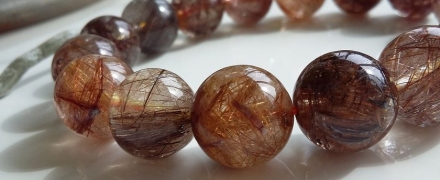open 10 am - 7 pm
laboratory is closed
Hair in stone

The world of volost stones is very diverse, and this is despite the fact that the presence of contrasting hair-like inclusions in a stone rarely increases its decorative properties. Usually, the presence of such inclusions impairs the visual perception of the clarity of the stone and has a negative impact on its liquidity. However, there are stones for which the presence of inclusions, although it causes a decrease in the purity characteristics, translates them into a separate group - hairy stones, the prices of which can often be even higher than for pure stones. The stones with hair-like inclusions primarily include quartz - the most valuable are rock crystal or lightly colored citrine and smoky quartz with contrasting inclusions of golden needle-like or filamentous rutile crystals, which are also called “hair of Venus” or “arrows of Cupid”. According to the esoteric tradition prevailing in Europe, these stones are talismans of the patron deities of love seeking favor. Tourmaline or actinolite, which are called “Thetis hair” or “Tethys hair”, are much inferior to the rutile “hairs”. These stones, in addition to their decorative qualities, are also amulets that allow one to gain the favor of aquatic deities - the Uranids of Tefis (Tethys), the patroness of sailors and one of the symbols of fertility, and the sea nymph Thetis (tourmaline "hairy") - helpers of sailors and wanderers. In addition, quartz is widespread with the inclusion of acicular sulfides and sulfosalts, iron hydroxides, or with empty channels formed due to the leached inclusion. From the late 1980s to the early 2000s, demantoids with visible hair-like inclusions of byssolite (fine-fibrous aggregates of tremolite or actinolite), called "horse's tail" or "comet tail", were popular. However, at present, the popularity of such demantoids with such inclusions has greatly decreased. Another mineral that is characterized by the formation of "hairs" is chrysolite. Needle and hair-like inclusions of black color in it are formed by minerals of the isomorphic ludwigite-vonsenite series. And although such stones are called "hairy", their demand in the market is not very high. Also, hairs are formed with feldspars, topaz, beryl, almandine, but such stones are not widespread in the jewelry market and are in demand only among amateurs and collectors.
В геммологической практике бывают весьма увлекательные случаи с диагностикой ювелирных вставок
Но помимо редкости цвета и высокой стоимости таких камней, многие розовые камни выделяются одной замечательной особенностью – они проявляют плеохроизм, то есть в зависимости от положения осмотра камня он может иметь дополнительные оттенки – оранжевый или пурпурный.
Currently, gemstones are produced by two fundamentally different technological methods - the High Pressure - High Temperature method (“HPHT”, High-pressure & High-temperature) and the Chemical Vapor Deposition (“CVD”, Chemical vapor deposition) method. The "HPHT" method is the most tested classical synthesis method, which can be used both carbon deposition on diamond from flux melts and catalytic reactions. In "CVD" synthesis, diamond growth occurs on a seed during carbon deposition mainly from a gaseous medium at relatively low temperatures and pressures.
Jewelry and precious stones are just such a category of goods, when buying which you need to pay attention to many criteria.
Sogdianite is a rather rare mineral and more often it can be found as a collection material (moreover, in systematic collections), and it is extremely rare in jewelry.






